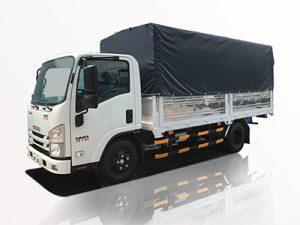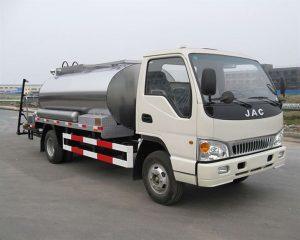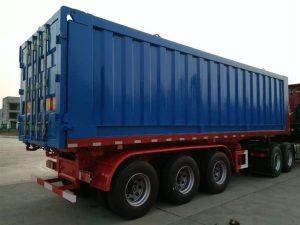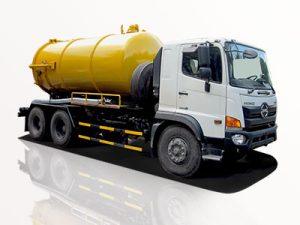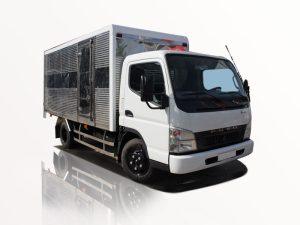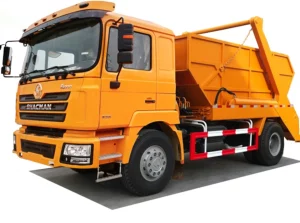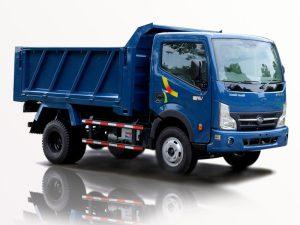Monday to Saturday - 8:00 -17:30
Everything You Need to Know About 40 Feet Trucks
When it comes to transportation and logistics, the size of the vehicle often dictates its utility, especially with oversized loads. One such vehicle that stands out in the trucking industry is the 40 feet truck. With unique specifications and capabilities, the 40 feet truck serves a variety of purposes, making it a go-to choice for businesses and individuals alike. In this article, we will explore the characteristics, uses, advantages, and frequently asked questions about 40 feet trucks.
Understanding 40 Feet Trucks
What is a 40 Feet Truck?
A 40 feet truck refers to a type of freight transport vehicle that measures 40 feet in length. Commonly used for shipping and transporting goods, these trucks are designed to carry substantial loads while maintaining stability and efficiency on the road. They often come in different configurations, including dry vans, refrigerated units, and flatbeds, allowing for versatile applications across various industries.
Specifications of 40 Feet Trucks
Typically, a 40 feet truck can hold up to 22 pallets or approximately 20,000 to 30,000 pounds of cargo, depending on its specifications and design. The interior width typically ranges from 7.5 to 8.5 feet, creating ample space for securing goods. Below are some common specifications:
| Specification | Details |
|---|---|
| Length | 40 feet |
| Width | 7.5 – 8.5 feet |
| Height | 8.5 feet |
| Cubic Capacity | Approximately 2,150 – 2,900 cubic feet |
| Weight Capacity | 20,000 – 30,000 lbs |
Types of 40 Feet Trucks
1. Dry Van Trucks
Dry van trucks are enclosed trailers ideal for transporting non-perishable goods. They provide protection from the weather, making them suitable for many types of loads, from furniture to electronics.
2. Refrigerated Trucks
Also known as reefer trucks, these vehicles feature temperature-controlled containers, meaning they are perfect for transporting perishable items like food and pharmaceuticals.
3. Flatbed Trucks
Flatbed trucks offer an open platform, making loading and unloading simpler. They are typically used for oversized or unusual cargo that does not fit neatly into standard trailers.
4. Container Trucks
Container trucks are designed for intermodal transport, allowing containers to be easily loaded and unloaded. This is particularly useful for international shipping and logistics.
Advantages of Using a 40 Feet Truck
High Capacity and Efficiency
The most significant advantage of 40 feet trucks is their capacity. With the ability to carry large quantities of goods, they are highly efficient for businesses that require bulk transportation.
Versatility
40 feet trucks can serve various industries, making them applicable for transporting anything from construction materials to consumer goods, enhancing logistics flexibility.
Cost-Effectiveness
Employing a 40 feet truck can often be more economical than smaller vehicles due to reduced trips needed for large shipments. This subsequently saves on fuel, labor, and time.
Practical Examples of Use Cases
Retail Industry
In retail, 40 feet trucks are frequently utilized for transporting inventory to stores. For example, a supermarket chain might use a reefer truck to deliver dairy and frozen products to maintain supply without spoilage.
Construction Industry
A construction firm may utilize a flatbed 40 feet truck to deliver large sheets of plywood, stones, or other building materials to a job site, allowing them to set up without multiple trips.
Manufacturing
Manufacturers often use dry vans for bulk transport of finished goods to distribution centers or retailers. For instance, a factory creating furniture might schedule regular shipments for its products using dry van trucks.
How to Choose the Right 40 Feet Truck
1. Analyze Your Cargo Needs
Determine the type and quantity of goods you need to transport. Understanding the weight and volume of your cargo will help you select the appropriate truck configuration.
2. Consider the Distance
For long-distance shipments, reefer trucks might be advantageous for perishables. However, if your cargo is durable and weather-resistant, a dry van will suffice.
3. Look at Load Flexibility
Evaluate whether you need a truck that can handle specific loading/unloading conditions. A flatbed may be necessary for oversized items, whereas standard pallets fit well in a dry van.
4. Budget Constraints
Consider the transportation costs involved with each truck type. Assess operational expenses like fuel efficiency, maintenance, and fees to find the most budget-friendly option.
Safety and Regulations for 40 Feet Trucks
Common Safety Regulations
Operating a 40 feet truck involves adhering to a series of safety regulations. Here’s a quick overview:
- Ensure the vehicle is regularly maintained and inspected.
- Follow weight restrictions and load guidelines set by local authorities.
- Equip trucks with proper safety gear and equipment, including reflective triangles and fire extinguishers.
Driver Requirements
Typically, drivers of 40 feet trucks need a Commercial Driver’s License (CDL). They should also undergo safety training focused on handling large vehicles and cargo securing techniques.
Costs Associated with 40 Feet Trucks
| Cost Type | Estimated Cost |
|---|---|
| Purchase Price | $30,000 – $100,000 |
| Insurance | $5,000 – $15,000 annually |
| Fuel Costs | $3,000 – $4,500 monthly |
| Maintenance | $1,000 – $2,500 annually |
Frequently Asked Questions (FAQ)
1. What is the maximum weight a 40 feet truck can carry?
The maximum weight typically ranges from 20,000 to 30,000 pounds, depending on the truck’s design and regulations.
2. What types of permits are required for operating a 40 feet truck?
Permits vary by state but generally include a commercial driver’s license (CDL), vehicle registration, and sometimes special permits for oversized loads.
3. Can a 40 feet truck be used for international shipping?
Yes, 40 feet trucks are widely used in international shipping and can carry standardized shipping containers for easier transport across borders.
4. How can I maintain a 40 feet truck?
Regular maintenance practices include oil changes, tire inspections, brake checks, and ensuring that all safety equipment is functional and compliant with regulations.
5. What is the average lifespan of a 40 feet truck?
On average, a well-maintained 40 feet truck can last anywhere from 10 to 15 years, depending on usage and maintenance practices.
6. Do 40 feet trucks have specific insurance requirements?
Yes, insurance for 40 feet trucks often includes liability coverage, cargo insurance, and physical damage insurance, tailored to the specific use and load capacity of the truck.


